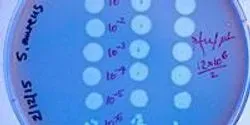Life Science

Salk scientists discover a single protein that energizes both muscles and the brain.

MicroRNA (miRNA) play an important role in controlling different processes that occur in cells through gene regulation. These small molecules are able to regulate many cellular processes by reducing target amounts in the cells. There are more than 1,900 locations in the human genome that are known to produce these miRNA molecules.

A pair of genetics researchers at Iowa State University found striking patterns in the building blocks of DNA in a wide variety of species, according to their recently published paper.

Two prominent researchers at UC Davis are under a microscope for their work in stem-cell biotechnology. The pair from University of California, Davis was awarded close to $4 million in funding to improve biotechnology intended for physicians studying stem cell treatments.

Scientists at Albert Einstein College of Medicine of Yeshiva University and their international collaborators have developed a novel fluorescence microscopy technique that for the first time shows where and when proteins are produced. The technique allows researchers to directly observe individual messenger RNA molecules (mRNAs) as they are translated into proteins in living cells. The technique, carried out in living human cells and fruit flies, should help reveal how irregularities in protein synthesis contribute to developmental abnormalities and human disease processes including those involved in Alzheimer’s disease and other memory-related disorders. The research will be published the March 20 edition of Science.

By constructing the first fine-scale map of the British Isles, Oxford University researchers have uncovered distinct geographical groupings of genetically similar individuals across the UK.

A new study led by researchers at The Scripps Research Institute (TSRI) and the University of California (UC), San Diego School of Medicine shows that certain stem cell culture methods are associated with increased DNA mutations. The study points researchers toward safer and more robust methods of growing stem cells to treat disease and injury.

Bacteria may not have brains, but they do have memories, at least when it comes to viruses that attack them. Many bacteria have a molecular immune system which allows these microbes to capture and retain pieces of viral DNA that they have encountered in the past, in order to recognize and destroy it when it shows up again.












